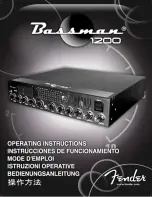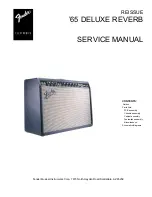
STINGER – Owner’s Manual – Ver: 2.31
12
Elmwood Amps
TUBES - MAINTENANCE
Tubes – Maintenance
Tubes – general
The great thing about a tube amplifier is… that’s right – the tubes.
Tubes are the components that provide your amplifier with heart and soul together with that
unmatched organic, dynamic response.
But as light bulbs, the tubes need to be replaced at some time and can occasionally
malfunction. How frequent you need to change tubes is depending on how often you use
your amplifier and how hard you push it. Normally you need to replace the tubes every 1 – 2
years, but if you are a pro-guitarist on tour, you might want to replace them even more often
to be sure your tubes are performing at an optimal level.
A shortened lifetime of a tube can also be dependent on shocks during transportation,
incorrect speaker load, peaks from the power supply or other abuse.
See tube chart below for positions and functions for speeding up your diagnose.
Power tubes
If the power of the amplifier is getting weak and your tone is flattening, try replacing the
power tubes.
Power tubes can short-cut when malfunctioning, making the main fuse blow. If your amplifier
should act strange and/or then be out of business – first replace the power tubes – and, if
needed, check the main fuse and replace with a fuse of same type.
The power tubes should always be replaced in matched quartets for best performance.
Always use the same type of power tubes as the original ones.
If the amplifier is still not working properly, there are fuses inside the amplifier that needs to
be checked by a certified service technician.
Pre-amp tubes
If you experience noise, un-normal feedback - rattling or fuzzy sounds from the output of your
amplifier – it is very likely to be caused by a bad pre-amp tube. The best way to diagnose a
bad pre-amp tube is to use a replacement tube of the same type that is known to be good
and substitute it in each possible tube location, one at the time, until the problem disappears.
See tube chart for positions and functions for speeding up your diagnose.
CAUTION:
Tubes may be extremely hot after the amplifier has
been on. Never touch a hot tube.


































